A postcard I mailed from Bali in July 1994.
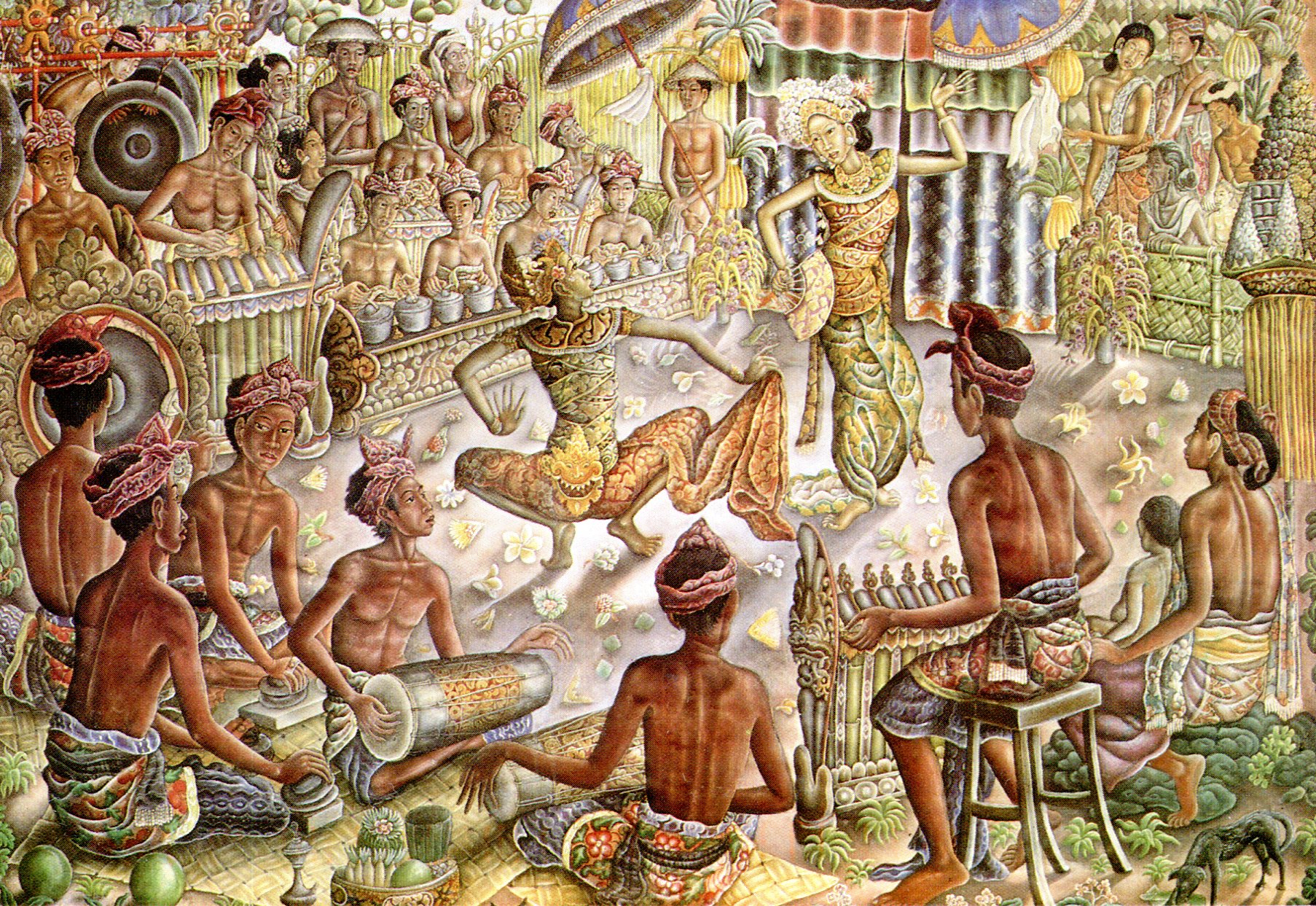 A lively, colorful work by Anak Agung Gde Sobrat: “Oleg Tambulilingan dance.”
A lively, colorful work by Anak Agung Gde Sobrat: “Oleg Tambulilingan dance.”
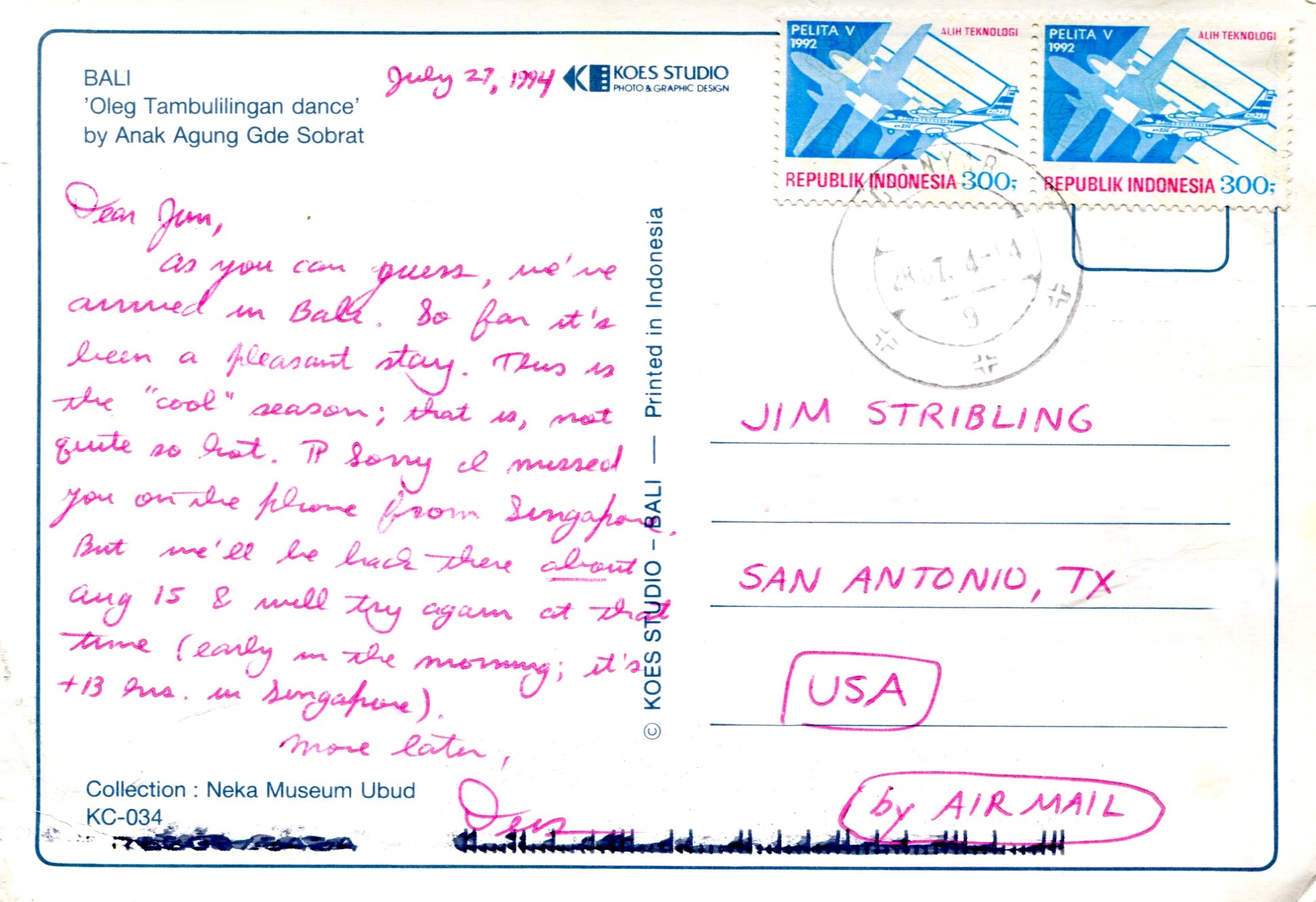 The Neka Museum in Ubud, now known as the Neka Art Museum, had this particular work on display at the time.
The Neka Museum in Ubud, now known as the Neka Art Museum, had this particular work on display at the time.
A postcard I mailed from Bali in July 1994.
 A lively, colorful work by Anak Agung Gde Sobrat: “Oleg Tambulilingan dance.”
A lively, colorful work by Anak Agung Gde Sobrat: “Oleg Tambulilingan dance.”
 The Neka Museum in Ubud, now known as the Neka Art Museum, had this particular work on display at the time.
The Neka Museum in Ubud, now known as the Neka Art Museum, had this particular work on display at the time.
First heard about the Notre-Dame fire on the car radio late yesterday afternoon. Wish I could report some kind of transcendent experience at the cathedral during our visit years ago, but no. Other people’s accounts along those lines are being posted with great speed.
We were duly impressed by the stained glass, the flying buttresses and the overall sweeping majesty of the exterior. But sad to say, what I remember most was that the cathedral interior was dark.
I understand the reason. Lighting is expensive. So the cathedral wasn’t much illuminated on an ordinary day in November 1994 for the ordinary tourists who were visiting. The thing to do would have been to attend a service, but we thoughtlessly did not.
Among all the pictures I took in 1994, I have exactly one of Notre-Dame. Of course it was one of the Rose Windows. I didn’t want to use film anywhere too dark. Not that I had the equipment to take a very good image anyway.
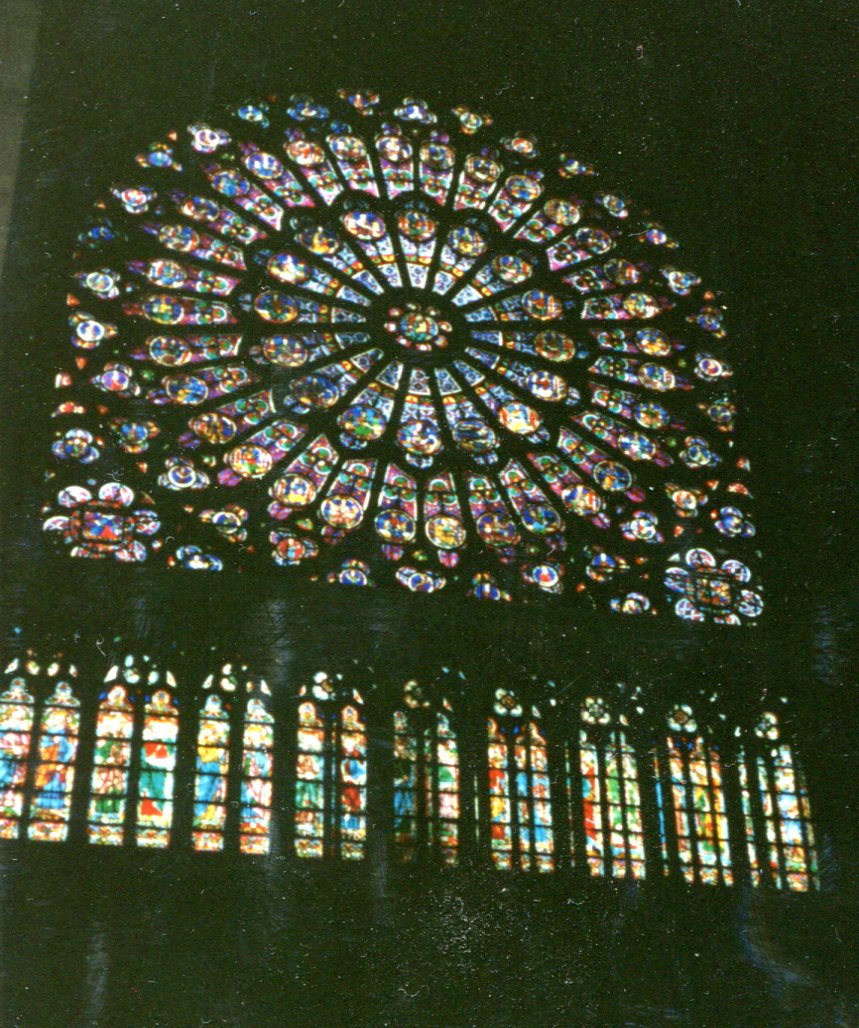
Maybe we were lucky to be able to see it at all. Whether you credit Dietrich von Choltitz with not burning down Paris in 1944, or think that’s nonsense, the Germans could have certainly done a lot of damage before liberation, including dynamiting something so quintessentially French as Notre-Dame du Paris. Such an act would have been in character, after all.
I’ve read today that, at least, the flying buttresses did indeed buttress the walls, though the roof was lost, including wood lattices made from trees cut down between 1160 and 1170. The Rose Windows seem to be intact.
Naturally, the building will be restored. I wonder whether there will be arguments about rebuilding the completely lost spire. Considering the long history of the cathedral, it counts as a late addition.
Not long ago I was informed that I could add a relatively inexpensive item to the Amazon basket to bring an order (that other people in the house wanted) up to the no-shipping-charge level. Funny how that works, but what to get?
I believe this is derisively known as a First World problem, but even in a context of affluence, that doesn’t count as a problem. It isn’t even an annoyance. Also, isn’t it time to retire that hoary old division of the world? (Not bad, but not my favorite song of theirs; that would be “Invisible Sun.”)
I decided I didn’t want to add to my household clutter, even things you (I) can’t have too many of — books, postcards, cheap coins, maps — so I got a box of Boh Cameronian.
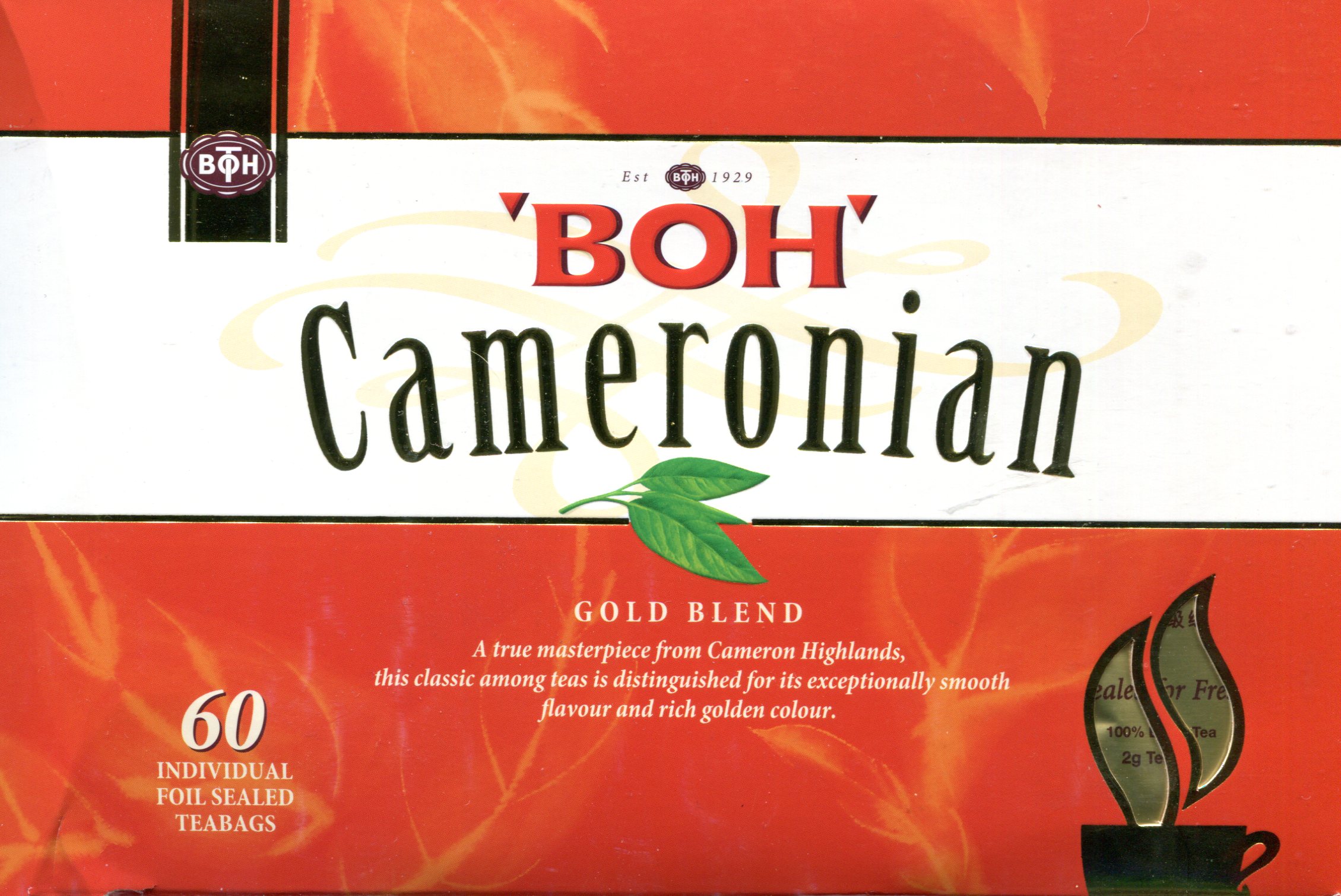 Boh Cameronian! It’s been nearly 25 years since I had a fine cup of Boh, which is tea from the Cameron Highlands of Malaysia. I became acquainted with it on my first visit to that nation in 1992. Two years later, we visited the Boh tea plantation up in the highlands.
Boh Cameronian! It’s been nearly 25 years since I had a fine cup of Boh, which is tea from the Cameron Highlands of Malaysia. I became acquainted with it on my first visit to that nation in 1992. Two years later, we visited the Boh tea plantation up in the highlands.
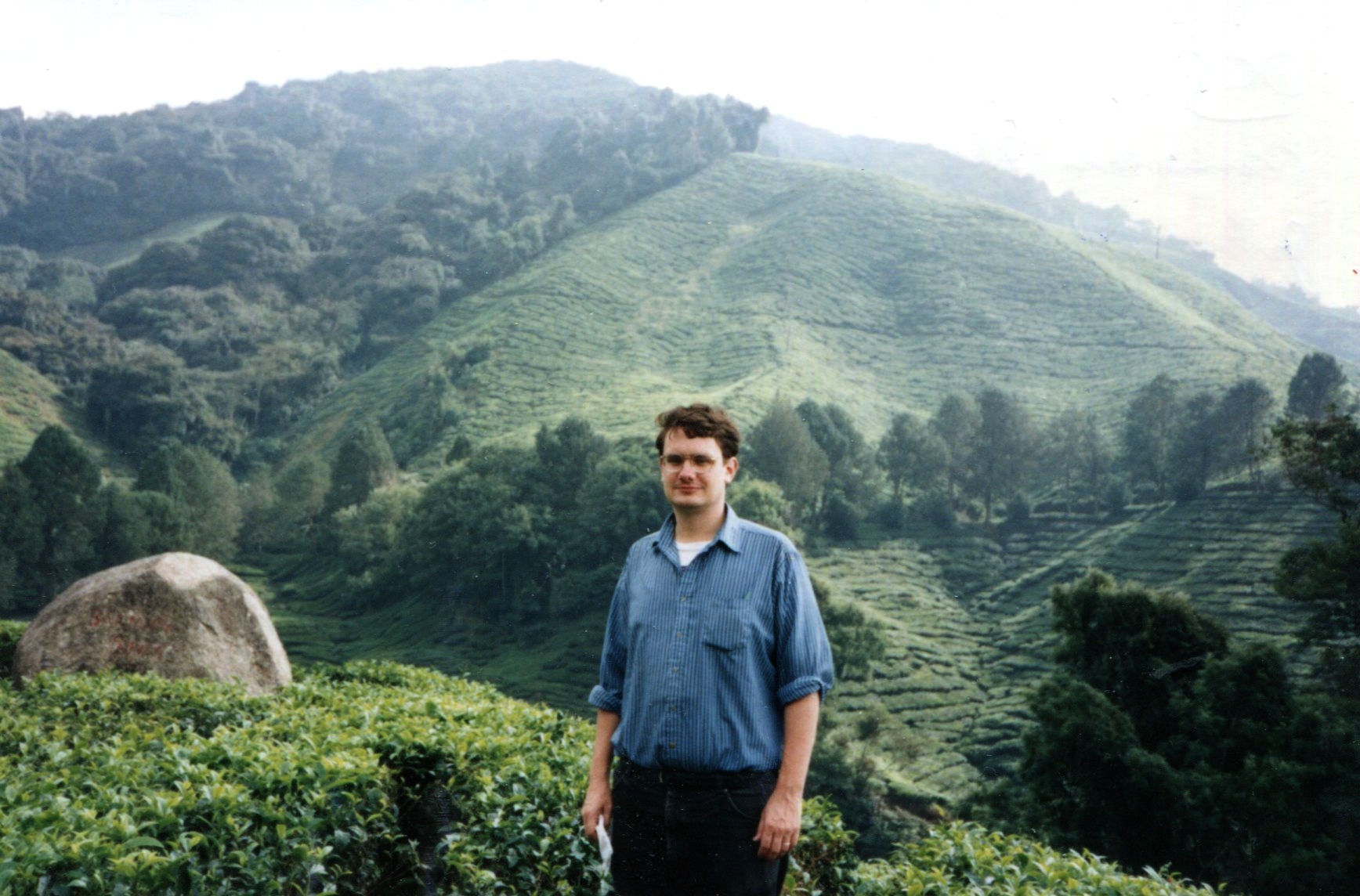 Note the long-sleeve shirt. The Cameron Highlands were a hill station for a reason.
Note the long-sleeve shirt. The Cameron Highlands were a hill station for a reason.
I’ve never seen Boh tea on the shelf in the United States, unlike Typhoo tea, even in stores that carry unusual or rarefied imports. In more recent years, I checked on line for the tea. I found it, but at astronomical prices.
I hadn’t checked in a good while, and never on Amazon. When facing my First World problem, I was inspired to look for Boh. A box of 60 bags was available there for about $12, plus no shipping. Twenty cents a bag. More than, say, Lipton, but you don’t buy Lipton for nostalgia value, or much of anything but price.
Even if I took the recommendation on the box and limited one bag to making one cup of tea — which I suspect is merely to encourage more consumption — that would be 20¢ a cup. More likely I will make a pot with each bag, or about three cups: around 7¢ a cup. Entirely worth it.
The marketing blarney on the box is in English and Chinese. The English:
Boh Cameronian takes its name from the Cameron Highlands, one of those special regions in the world blessed with a superb environment for growing teas of unique character and quality. Here, at 5000 feet above sea level at the scenic Boh Gardens, time-honored methods and innovation are combined to yield fine teas. Founded in 1929 by J.A. Russell, the pioneer of Malaysia’s tea industry, Boh teas are today renowned for their freshness and distinctive flavour.
The company offers a short history of Russell and the Boh plantation here.
I haven’t opened the box yet. It came just yesterday. A pleasant moment over the weekend might be the time to make a pot of Boh. I doubt that I can wait for that first cup till it’s nice enough to sit out on the deck, but I bet I’ll enjoy the some Boh al fresco in the near future.
A few years ago, I was browsing Google Maps, as one does, and I happened across the Cao Dai Tay Ninh Temple of Dallas. That was intriguing. I wanted to take a look.
Usually when I visit Dallas, I spend time in the northeast part of the city, at about 2 o’clock from downtown. The temple is in the southwest at about 8 o’clock from downtown, so I knew that it might be awhile before I made it down that way.
February 17 turned out to be the day we visited the Cao Dai Tay Ninh Temple of Dallas. This is the entrance. I think.
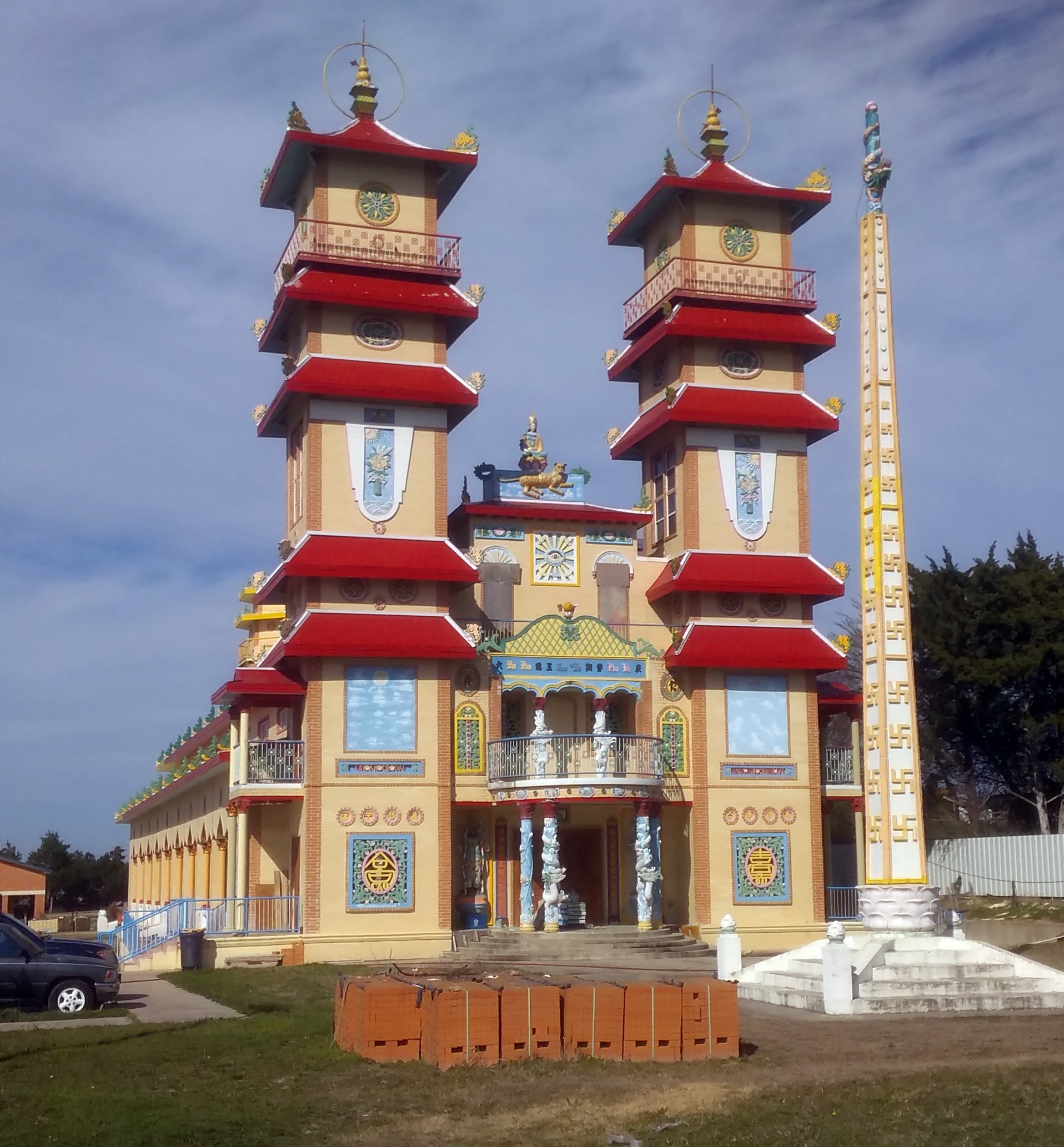 The temple belongs to an overseas branch of the Caodai religion of Vietnam.
The temple belongs to an overseas branch of the Caodai religion of Vietnam.
“Caodaism is a relatively new, syncretistic, monotheistic religion with strongly political character, established in 1926 in Southern Vietnam…” writes Md. Shaikh Farid. “It draws upon ethical precepts from Confucianism and Buddhism, occult practices from Taoism, theories of karma and rebirth from Buddhism and hierarchical organization from Roman Catholicism…
“This synthesis of elements adapted from other religions into a functioning religious movement manifests itself in such common Caodai practices as priestly celibacy, vegetarianism, seance inquiry and spirit communication, reverence for ancestors and prayers for the dead, fervent proselytism, and sessions of meditative self-cultivation.”
The temple is in a part of the city of that’s mostly devoted to light industrial buildings, mobile homes and undeveloped properties. Presumably, the site was affordable for local Caodai devotees.
I’d never heard of that religion until I made an excursion from Saigon in 1994 to the main Caodaist temple, the Holy See of the religion, in Tay Ninh, Vietnam. Here’s a picture I took of that building.
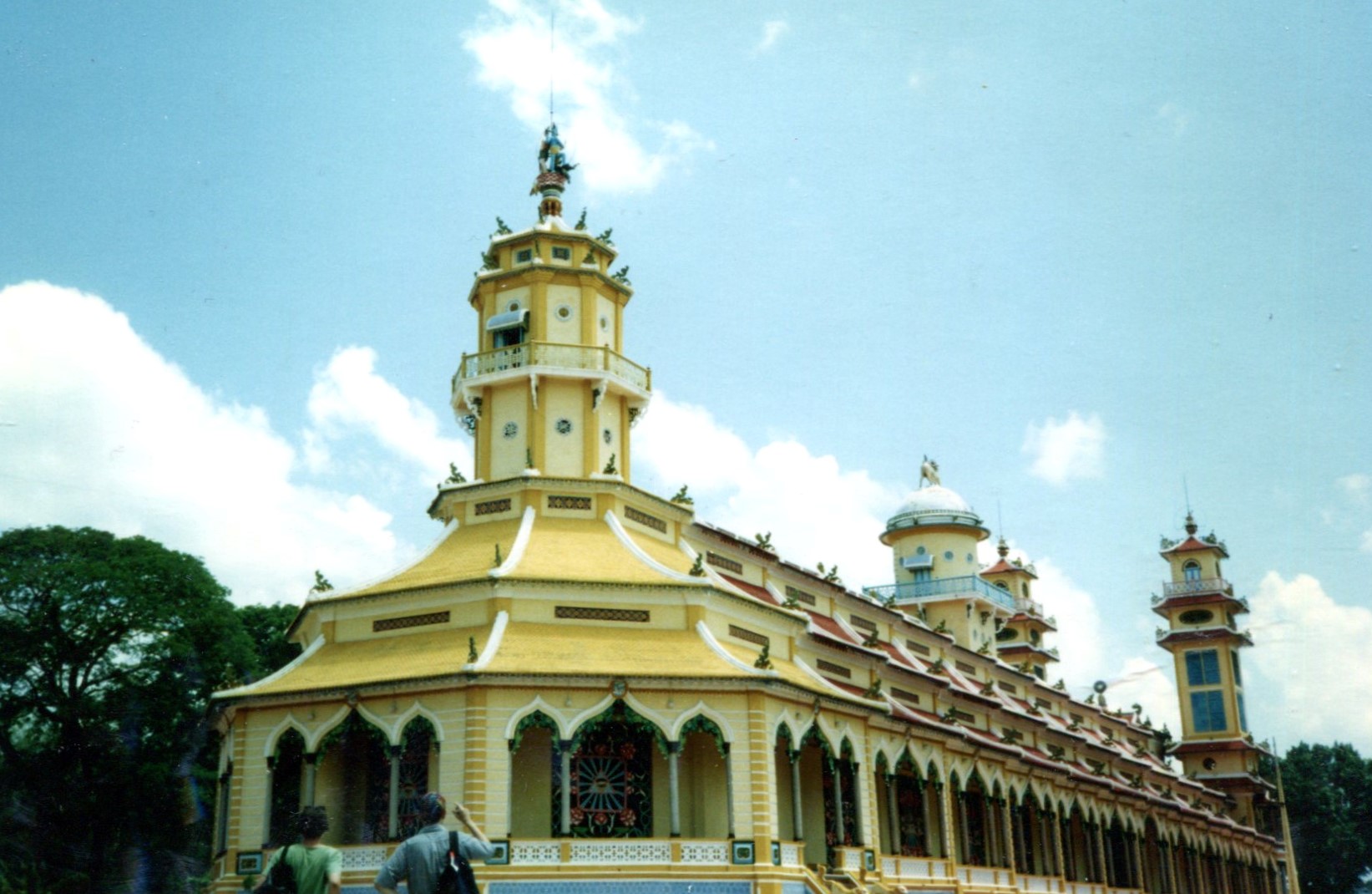 A more detailed description of the various influences that went into the building is here. An amalgam of Chinese and Indian and other elements, it seems.
A more detailed description of the various influences that went into the building is here. An amalgam of Chinese and Indian and other elements, it seems.
The temple in Dallas, from roughly the same angle.
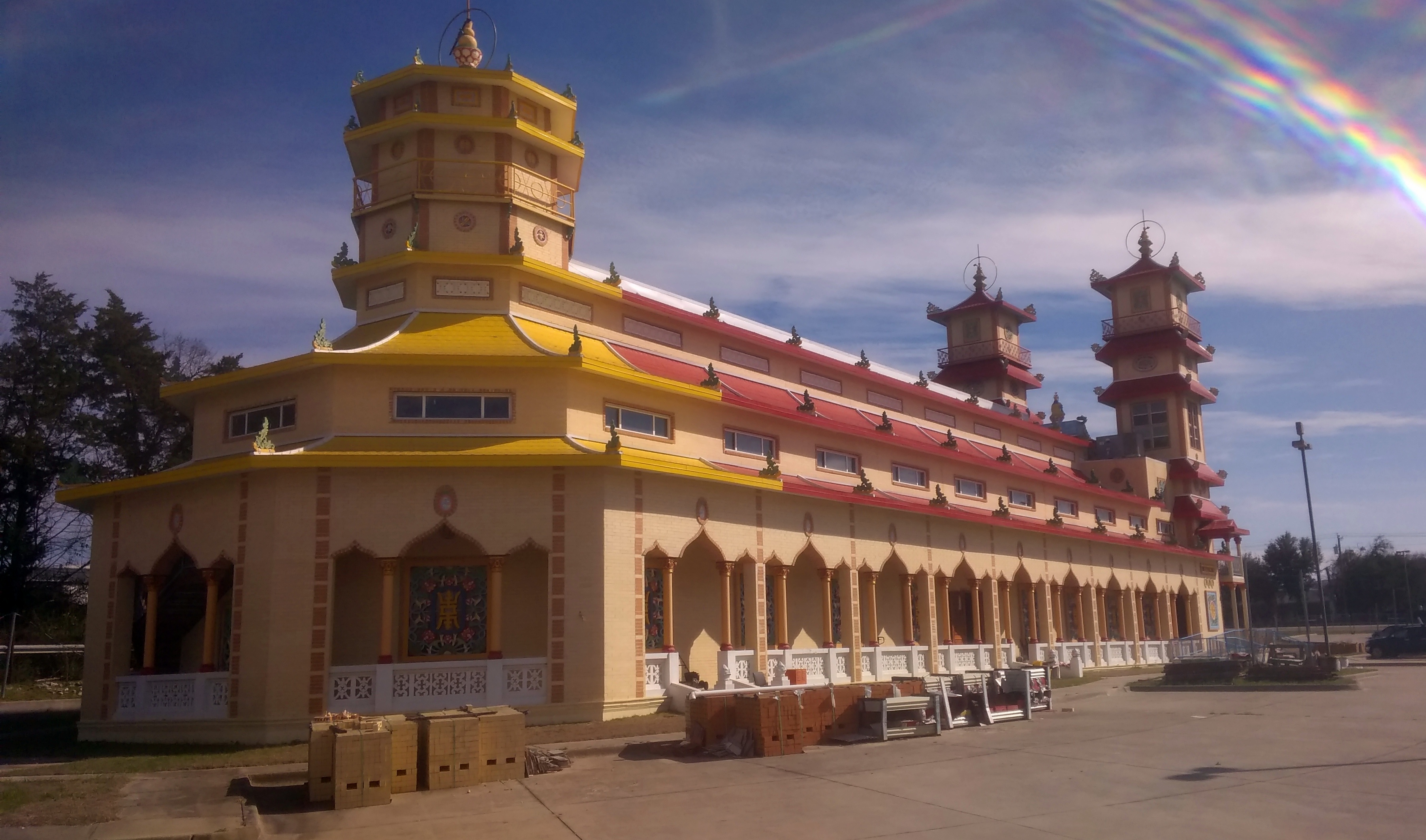 The similarities between the Holy See and the Dallas temple were apparent at once, though I’m pretty sure that the Holy See is larger, and some details are different.
The similarities between the Holy See and the Dallas temple were apparent at once, though I’m pretty sure that the Holy See is larger, and some details are different.
The Dallas temple is still a work in progress. This was especially noticeable when we went inside — a side door was open — and noticed construction materials and tools here and there.
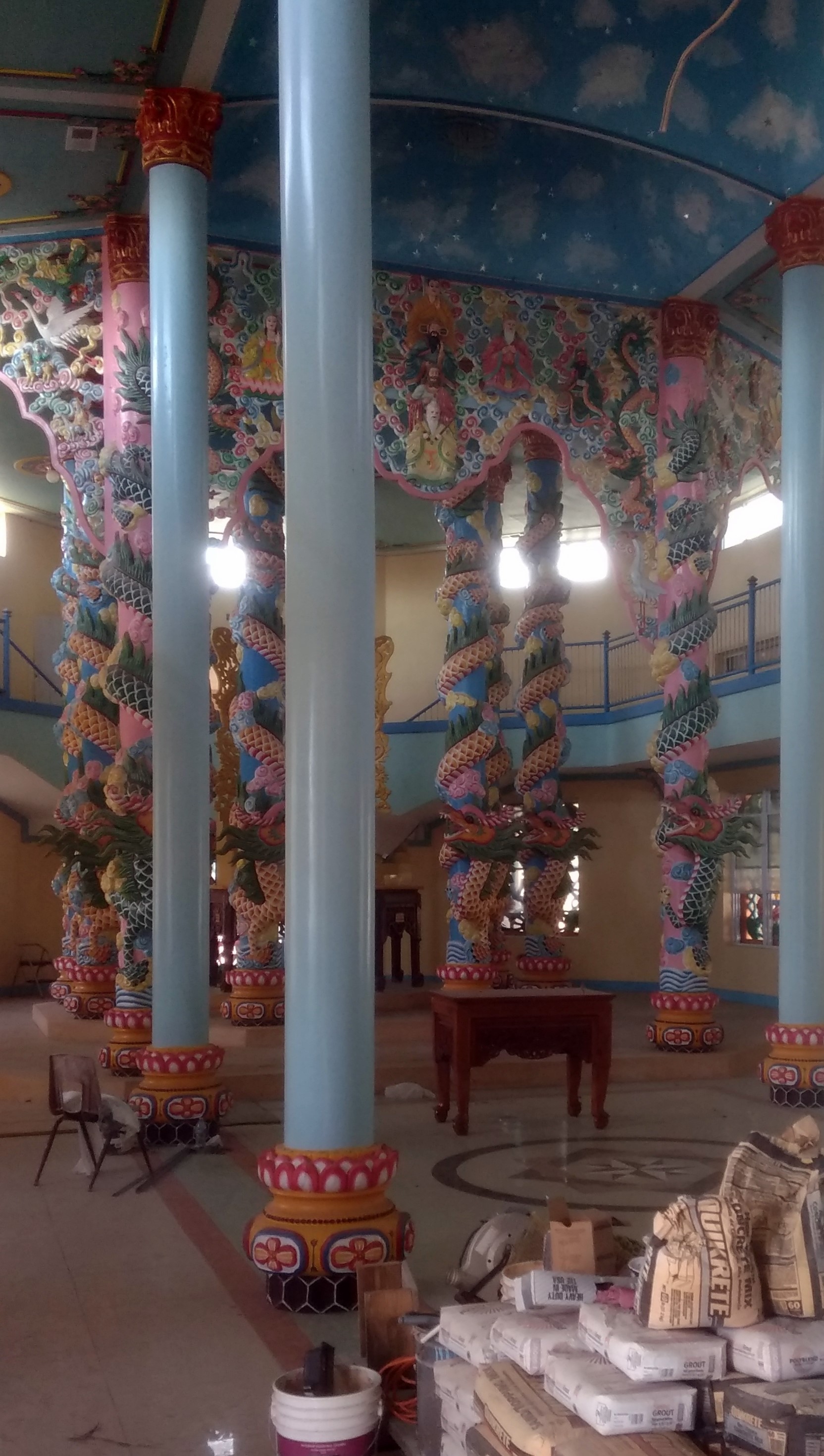 Though smaller, the Dallas interior also had strong similarities to the one in Tay Ninh.
Though smaller, the Dallas interior also had strong similarities to the one in Tay Ninh.
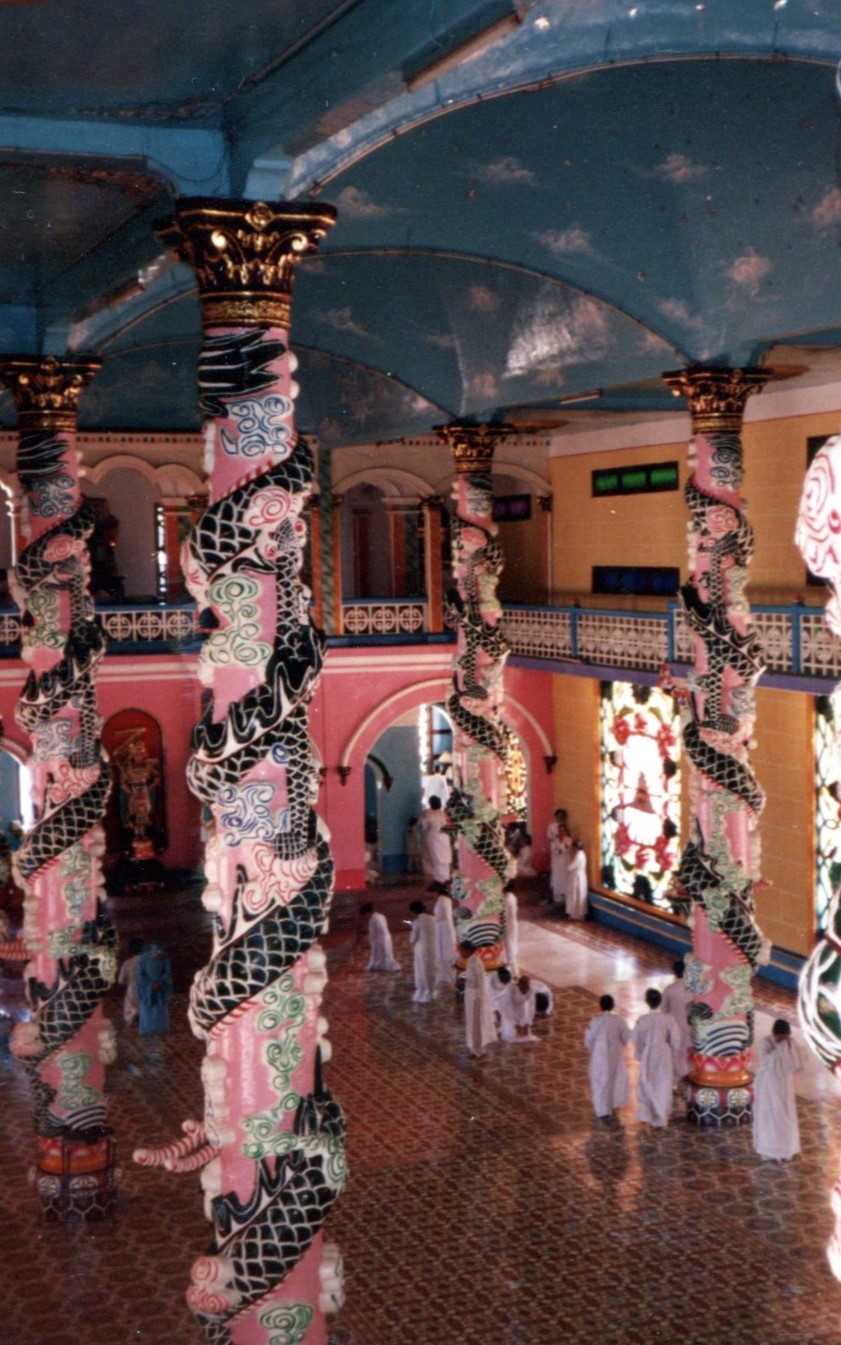 As I understand it, services are at midnight, 6 a.m., noon and 6 p.m. We visited around 3 p.m., so no Caodai worshipers were around in Dallas. The tour in Vietnam was timed to see the noon service, so we saw the worshipers in their various colorful robes, each color with a distinct meaning best known within the religion, though ordinary worshipers are in white.
As I understand it, services are at midnight, 6 a.m., noon and 6 p.m. We visited around 3 p.m., so no Caodai worshipers were around in Dallas. The tour in Vietnam was timed to see the noon service, so we saw the worshipers in their various colorful robes, each color with a distinct meaning best known within the religion, though ordinary worshipers are in white.
It’s good to travel to exotic places and see exotic things. Like you can in Dallas.
December 1994 was a good month. We were lucky to have it. After being on the move since April, it was time to take a rest but not quite time to go home. Or rather, go make a new home in the United States. So we spent most of the month in London.
I can’t remember how we found Ealing Tourist Flats. There was no Internet to consult, but there was a short-term rental industry, and we rented one of its units for four weeks. The property was a half-mile or so beyond the North Ealing Underground Station, which was on the Piccadilly Line, but it was much closer to a commuter rail station, Ealing Broadway, which is where we usually went if we wanted to go into the city center.
The neighborhood is part of the sprawl of greater London, with suburbization happening in the early 20th century. It still had a pleasant suburban character in the ’90s. Ealing Tourist Flats was at 94 Gordon Road.
I didn’t notice till I looked closely, but I’m in the picture, barely visible. I’m pretty sure the sign to the right of the main entrance, with the blue stripe, said Ealing Tourist Flats. Our flat was on the second floor, behind the windows on the left. It was a large studio with a foldout bed, table, television, and small food preparation area. Simple but all we needed for a few weeks.
In our time, I can look it up in detail. The tree’s gone and so is the sign on the front, but otherwise it looks about the same. I suspect it’s an ordinary apartment building these days.
Google Maps would have been a good thing to have, but of course in those days google would have just been a misspelling of 10100. If we’d had it, we might have noticed that Ealing Studios was actually nearby. We walked at least once to Walpole Park, which is next to the studios, though December wasn’t the best time for strolling in English parks, and I don’t think we realized it was close.
First coolish weekend since spring. Or rather warmish days and coolish nights. The beginning of the same slide into winter as every year.
A postcard I picked up in Russia in 1994.
The Sampsonievsky Cathedral (St Sampson’s), St. Petersburg. Looks like it’s been restored since the postcard was made. If I remember right, the building wasn’t even open when we visited St. Petersburg.
Anyway, at the time I sent the card to my brother Jim with a simple message.
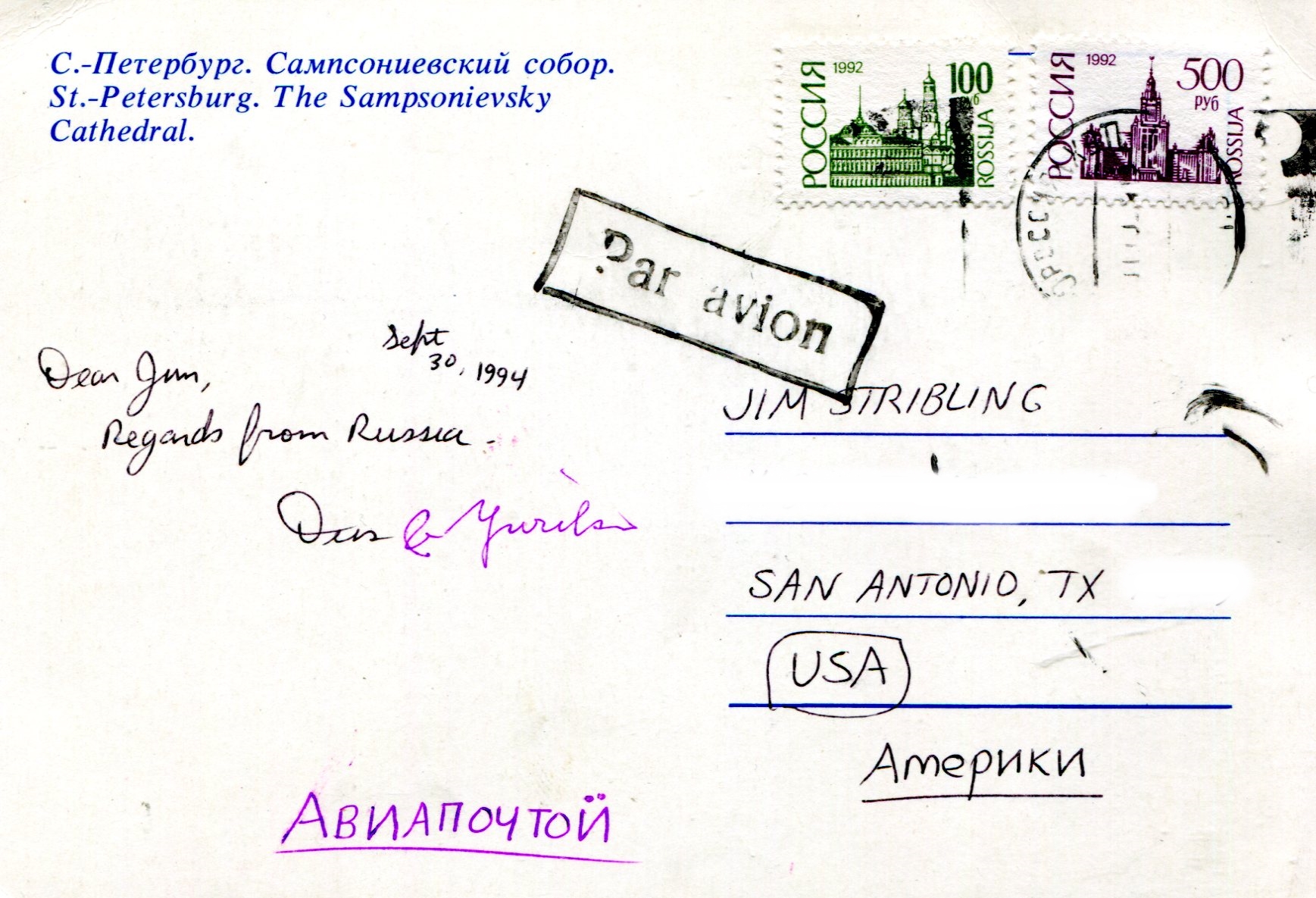
Address whited out for posting. 600 rubles would have been… anywhere from 20 to 30 U.S. cents, since the exchange rate bucked around from 2,000 to 3,000 rubles to the dollar during the two weeks we were in country. Not bad for an international mailing.
I probably sent a dozen cards from the main post office, an elegant structure dating back to the time of Catherine the Great, and still a post office in the Soviet and post-Soviet eras. Elegant, but a little dingy. If these pictures are accurate, the place has been spiffed up since the mid-90s.
Today I looked up the etymology of wat, the sort of Buddhist temple you find in Thailand. Here’s the brief word origin offered by Merriam-Webster online: Siamese, from Sanskrit vāṭa, enclosed ground.
Makes sense. We visited a number of wats in Thailand, especially in Bangkok, where large ones are thick on the ground. Wat Phra Kaew, home of the Emerald Buddha, holds the prime place of honor among the Thais. We visited the complex, which is part of the larger Grand Palace, on May 26, 1994.
Some features stood out right away. This is the Phra Si Ratana Chedi at the wat.
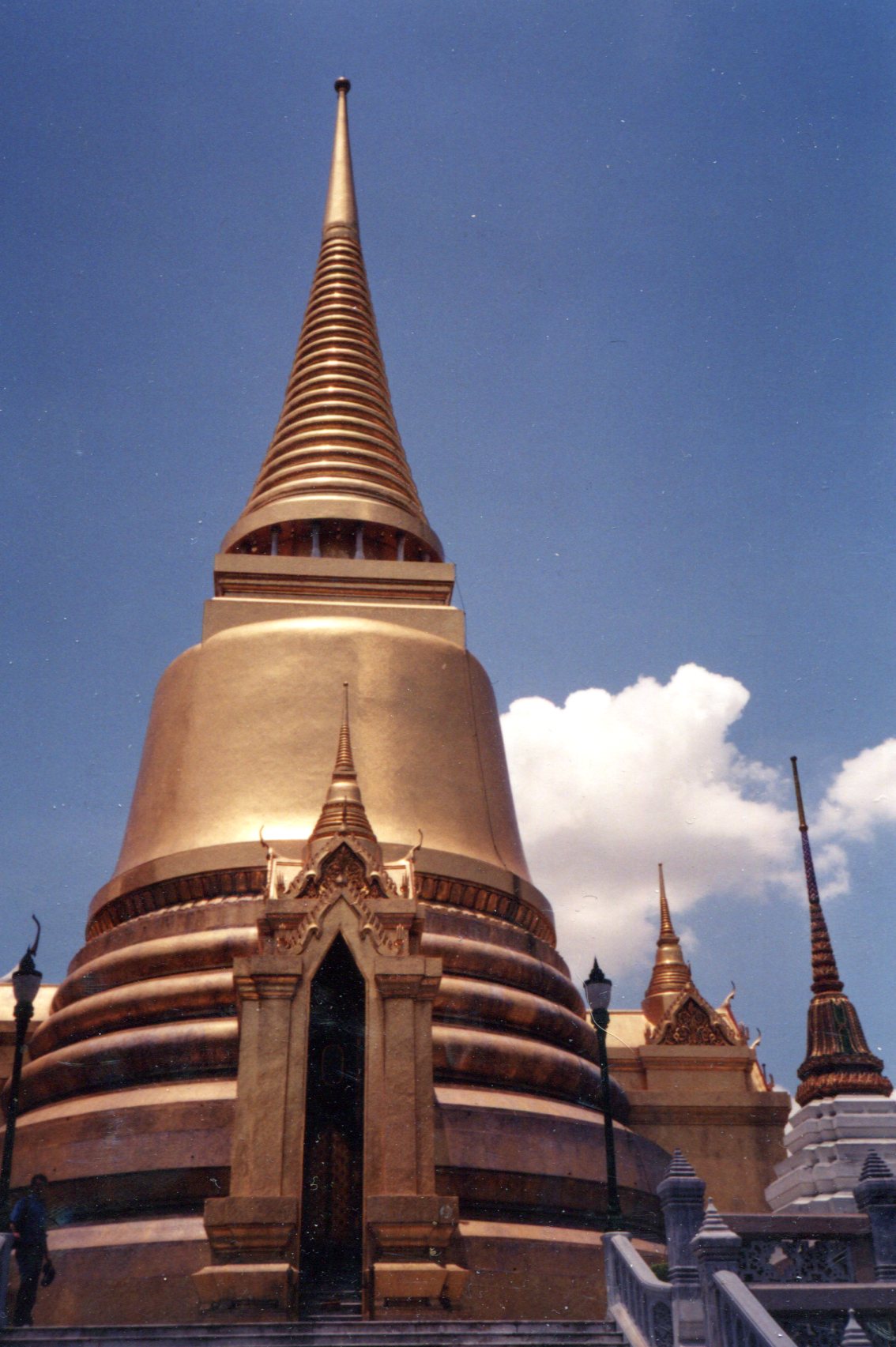 Bangkokforvistors says: “The chedi essentially balances the structures on the upper terrace, but it also recalls the monumental pagodas of the old capital in Ayutthaya… The chedi houses a piece of the Buddha’s breastbone.”
Bangkokforvistors says: “The chedi essentially balances the structures on the upper terrace, but it also recalls the monumental pagodas of the old capital in Ayutthaya… The chedi houses a piece of the Buddha’s breastbone.”
The Chapel of the Emerald Buddha is in the background here.
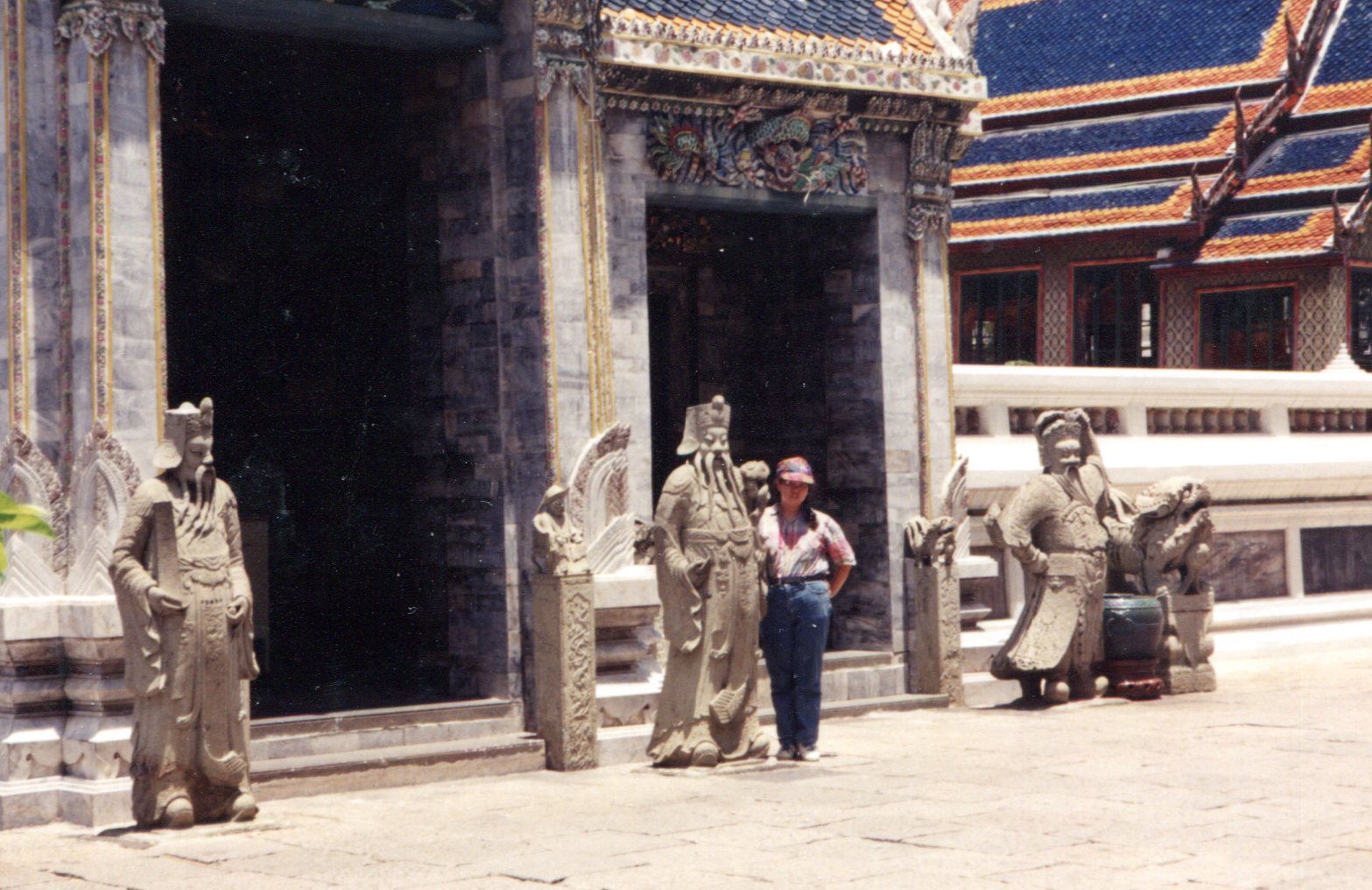 I made no image of the Emerald Buddha, since I believe that wasn’t permitted. Tourists were allowed in to see the statue, which isn’t sizable, but is definitely elegant, and with an aura of history about it.
I made no image of the Emerald Buddha, since I believe that wasn’t permitted. Tourists were allowed in to see the statue, which isn’t sizable, but is definitely elegant, and with an aura of history about it.
The Phra Mondop, or the library, which is not open to casual visitors.
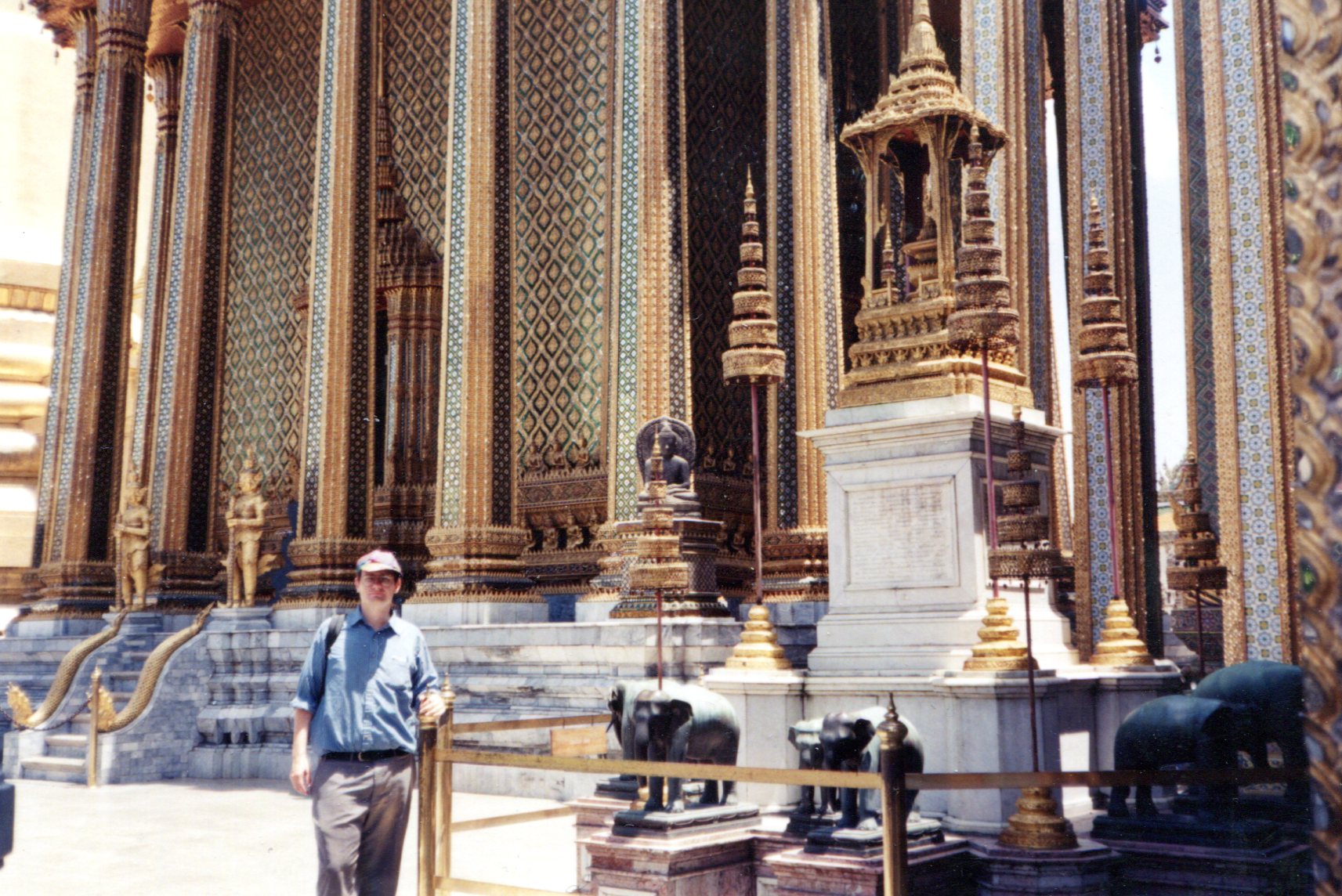 The Wiharn Yod, a prayer hall.
The Wiharn Yod, a prayer hall.
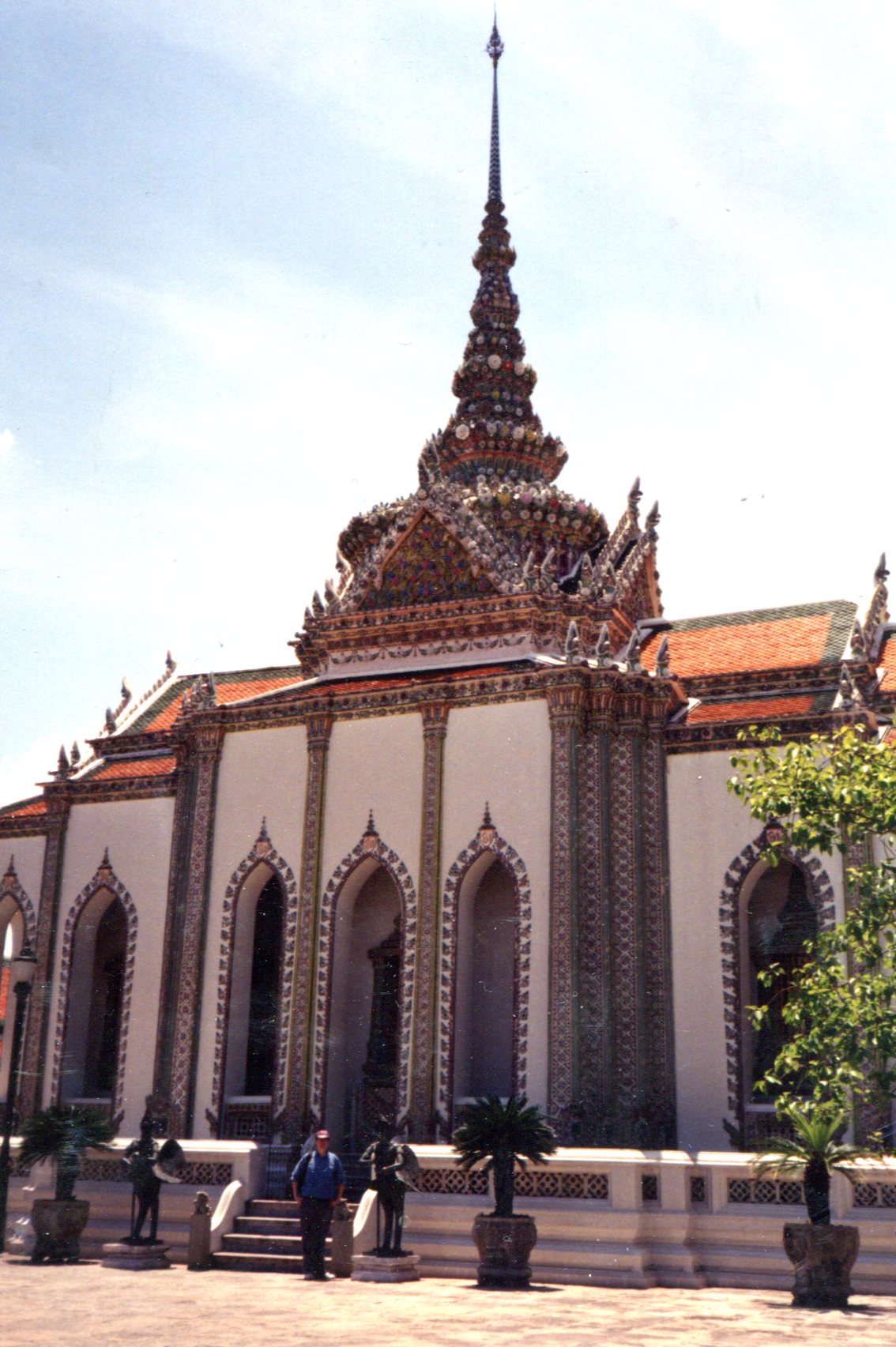
“The wiharn is unique in its Greek cross plan and its Chinese porcelain decoration,” Bangkokforvistors says.
The following are other images I can’t quite pinpoint, but which were in the enclosed ground of Wat Phra Kaew.
Thinking back on it, I have an overall impression of heat and gilding and mirror tiles and heat and intricate but unfamiliar iconography and heat. The time to have gone might have been when the wat opened first thing in the morning, but we weren’t always as energetic as necessary for early-morning tourism in the tropics. Yet sometimes we were.
Curious about more recent tourist experiences at Wat Phra Kaew, I took a look at Trip Advisor. Most visitors rate it highly, which is fitting. But the low-raters point to changes since we were there.
For one thing, it’s now 500 baht to get in. About $15.50 these days. I’m certain we didn’t pay anything close to that much, making it an example of gouging tourists at supposed must-see places.
Also, tourism within Asia has changed somewhat since the 1990s, if Guimo68 from Miami is to be believed. That is, the Chinese are showing up in force (all sic): “Filled with chinese tourists trying to cut in front of you. I had fun trying to cut in front of them, so 2 stars… The whole experience is like trying to see the mona lisa. Too many rude and loud Chinese.”
Then again, there’s no pleasing some people, such as SophieLoveOz of Ellenborough, Australia (all sic): “I was so excited about the Emerald Buddha but was really disappointed as it is teeny tiny and way up high on a high stupa so can’t see it. It is Jade not Emerald, according to our guide. So many beautiful Golden Buddhas elsewhere.”
Normandy was surprisingly green in November 1994.
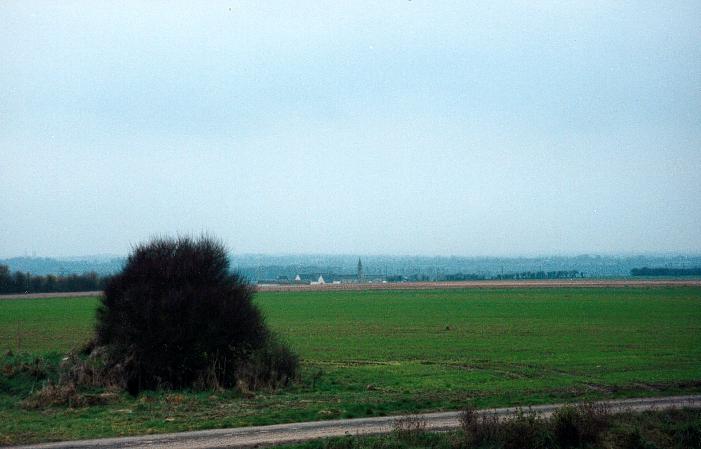 Then again, that winter was, at least until December, reportedly mild. I believe the shot above was taken from the train near Bayeux, where we stayed a few days.
Then again, that winter was, at least until December, reportedly mild. I believe the shot above was taken from the train near Bayeux, where we stayed a few days.
The coast near Omaha Beach, so busy 50 years earlier in a way that doesn’t attract tourists, was comparatively empty by late fall.
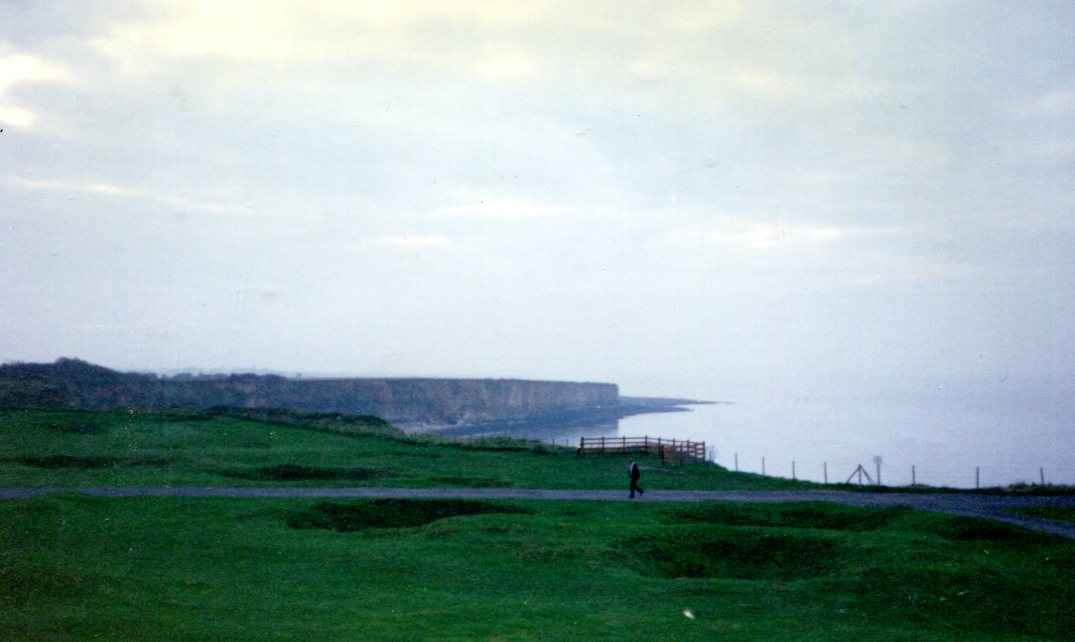 I’ll bet there were a lot of visitors, of the tourist kind, along with old soldiers, during the summer of ’94, especially in June. Pennants hanging in the town — which unfortunately I didn’t document on film — still welcomed such visitors in English for the 50th anniversary, especially the old soldiers.
I’ll bet there were a lot of visitors, of the tourist kind, along with old soldiers, during the summer of ’94, especially in June. Pennants hanging in the town — which unfortunately I didn’t document on film — still welcomed such visitors in English for the 50th anniversary, especially the old soldiers.
Former German pillboxs, left to the elements.
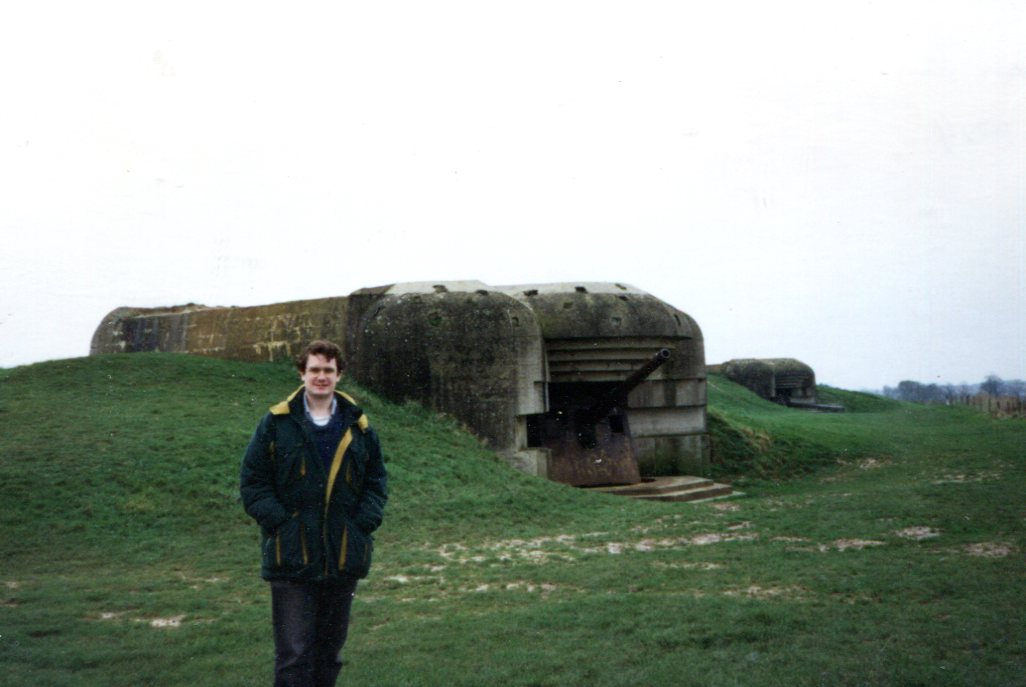 All well and good, to visit Normandy. But I need to get back to France someday, to see former trenches.
All well and good, to visit Normandy. But I need to get back to France someday, to see former trenches.
Around this time of the year in 1994, we were in Kraków. I remember liking the city a lot. In my memory, it’s always an autumn gray there. It has also just rained, though I don’t actually remember any rainy weather.
The streets were narrow and the buildings had a prewar feel. Which war? All the modern wars. Architecturally, at least, Kraków survived the great convulsions of the 20th century.
Actually, only the Old Town felt that way. We didn’t stay there, but rather in a plainer area not far away, and spent a lot of time wandering around the better-looking historic areas. As one does, as a footloose tourist.
I’ve posted about nearby places, such as the Wieliczka Salt Mine and Auschwitz II-Birkenau, but not central Kraków. This is a view of Wawel Cathedral.
 Or, as Wiki tells me, in full: The Royal Archcathedral Basilica of Saints Stanislaus and Wenceslaus on the Wawel Hill. We visited it, and the adjacent castle, and were duly impressed.
Or, as Wiki tells me, in full: The Royal Archcathedral Basilica of Saints Stanislaus and Wenceslaus on the Wawel Hill. We visited it, and the adjacent castle, and were duly impressed.
I don’t seem to have a picture of the Renaissance Cloth Hall in Main Market Square, but I remember both the hall and the square well. Inside was a large market, a vast array of booths offering goods by artisans, that didn’t seem to be tilted toward the tourist trade. Some of the Christmas tree decorations for sale were exquisite. The only reason we didn’t buy any was that we didn’t think they’d survive shipping home or a few more months on the road.
This building caught my attention. Enough to take a picture anyway. But I didn’t make a note of what it was, if I knew.
You’d think you’d remember at least the things you take pictures of, but it isn’t so.
I hope Bali is as pleasant as it was 20-odd years ago. You go for its many charms, and so do a lot of other people. Yet somehow the island holds its crowds well.
Though serving an economic purpose, the Tegallalang Rice Terraces near Ubud, created using a longtime cooperative irrigation system, are pleasing enough to attract outsiders such as us.
Plenty of people go to Goa Gajah, “Elephant Cave.”
As well as the Ubud Monkey Forest.
I carelessly didn’t write the name of this temple on the photo, but I like it.
Not nearly as many people spend time by the ocean at Candi Dasa, with its rocky beaches. But we enjoyed the place.
Lying around near the beach wasn’t the best part of staying at a room at Candi Dasa. Much better was listening to the crash of the ocean at night just outside your room, as a cool ocean breeze blew through. It was even better when the wind and rain kicked up, as it did a few times. Some of the lesser-commented pleasures of Bali are its many aural treats, and not just the ocean.